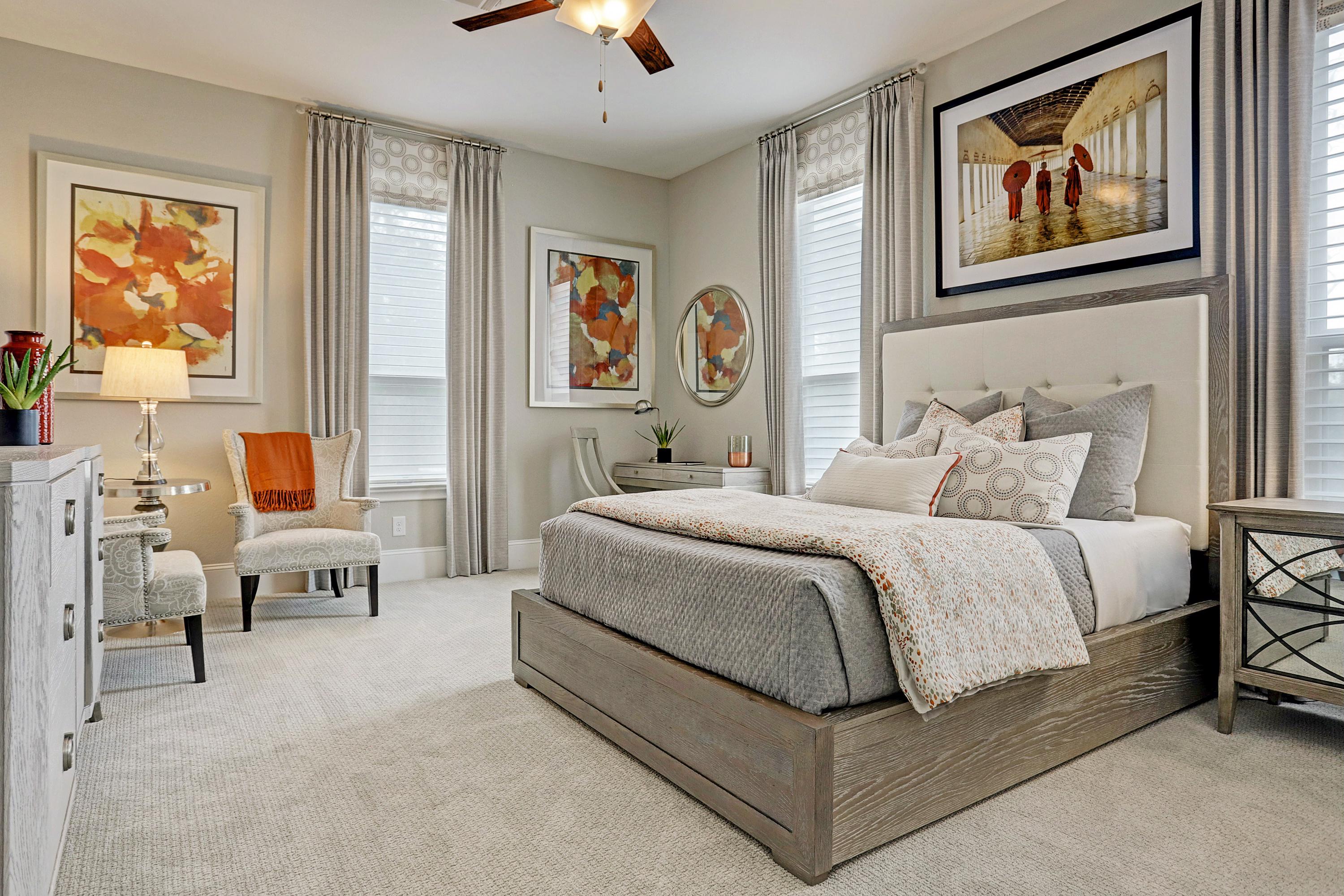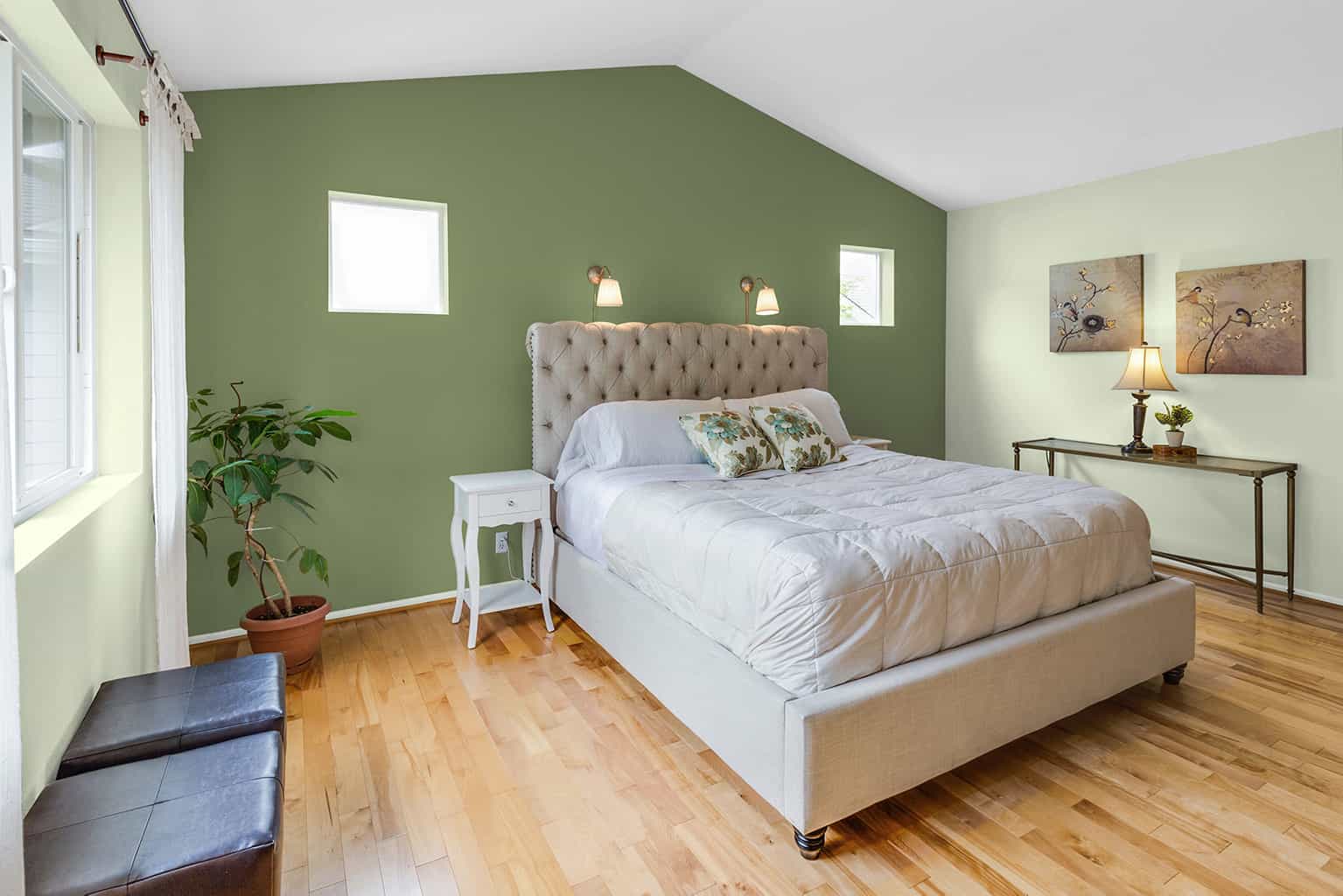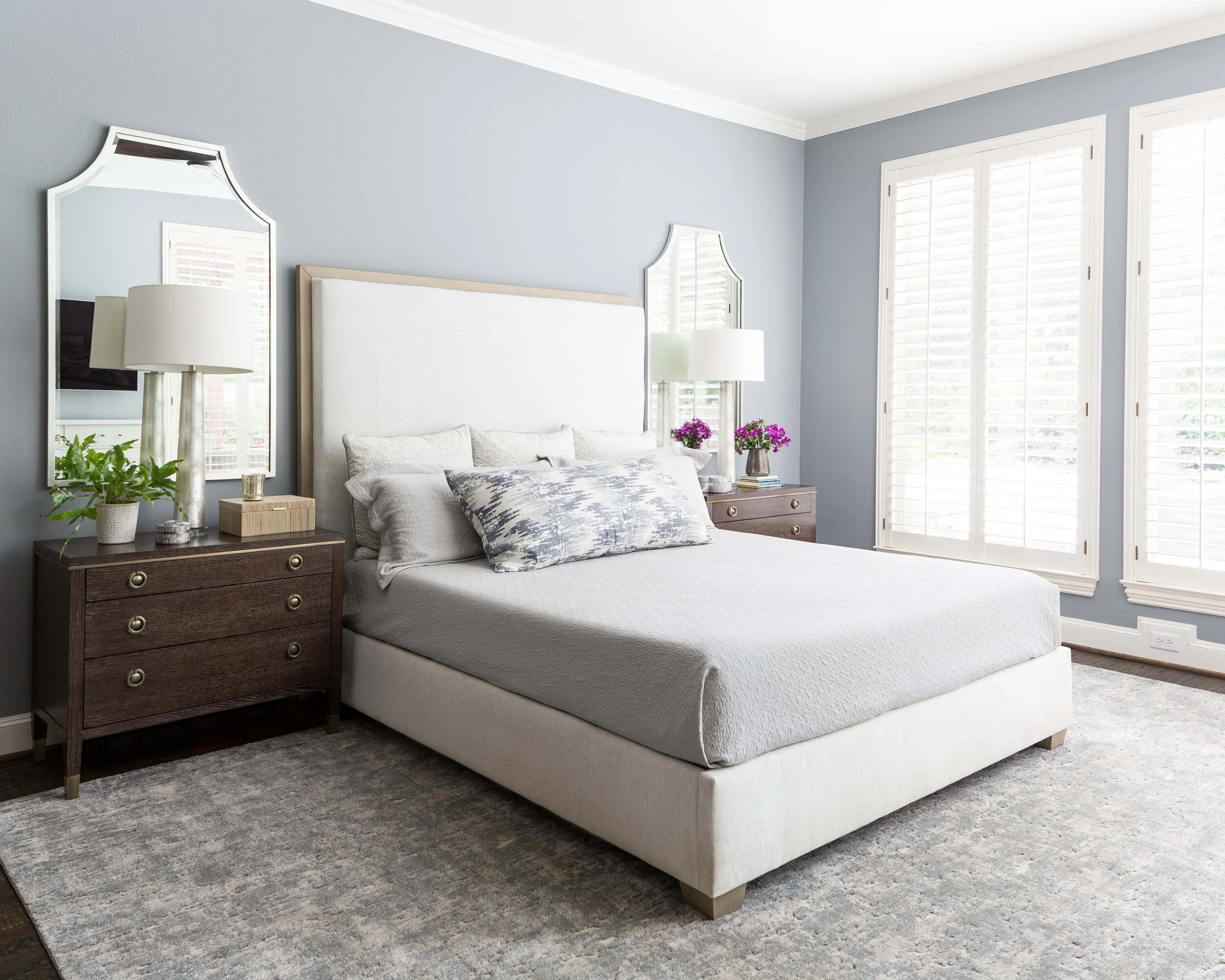Popular 2018 Bedroom Paint Colors

Creating a relaxing and inviting atmosphere in your bedroom is crucial for a good night’s sleep and overall well-being. Choosing the right paint color can significantly impact the mood and feel of your space. 2018 saw a surge in popularity for certain colors that not only reflected design trends but also catered to the desire for tranquility and sophistication.
The Top 5 Most Popular Bedroom Paint Colors of 2018
These colors gained popularity for their versatility, psychological effects, and ability to create a sense of calm and sophistication.
- Sherwin-Williams Agreeable Gray (SW 7029): This cool gray offers a neutral backdrop that complements a wide range of furniture and décor styles. Its calming effect promotes relaxation and a sense of serenity. Agreeable Gray is a popular choice for bedrooms because it creates a clean and sophisticated look while remaining timeless and versatile. It works well with both modern and traditional furniture styles and can be paired with various accent colors.
- Benjamin Moore Revere Pewter (HC-172): This warm gray with a hint of warmth provides a sophisticated and cozy ambiance. Its subtle undertones create a sense of depth and richness, making it perfect for bedrooms seeking a touch of elegance. Revere Pewter is a versatile color that can be paired with a range of accent colors, from bold blues and greens to soft pinks and yellows.
- Pantone 13-0750 Tranquil Dawn: This soft blue-green hue evokes a sense of calm and tranquility. It creates a soothing atmosphere that is ideal for promoting relaxation and sleep. Tranquil Dawn can be paired with white or cream furniture and accents to create a serene and airy feel.
- Sherwin-Williams Accessible Beige (SW 7036): This warm, neutral beige provides a comforting and inviting atmosphere. It is a popular choice for bedrooms because it creates a sense of warmth and coziness while remaining timeless and versatile. Accessible Beige is a great choice for bedrooms with natural light, as it reflects the light and creates a bright and airy feel.
- Benjamin Moore Simply White (OC-117): This crisp white provides a clean and airy feel, making it a popular choice for bedrooms that lack natural light. It can be paired with a variety of accent colors to create a personalized look. Simply White is a versatile color that can be used to create a variety of looks, from modern and minimalist to traditional and elegant.
Color Combinations and Schemes

Creating the perfect bedroom color palette is an art form, blending hues to evoke a specific mood and style. 2018’s popular paint colors offer a diverse range of options for achieving a unique and inviting atmosphere.
Color Palette #1: Serene Sanctuary
This palette is designed for those seeking a calming and restful space.
- Base Color: A soft, muted gray like “Silver Marlin” by Sherwin-Williams. This color acts as a neutral backdrop, creating a sense of tranquility.
- Accent Color: A warm, earthy tone like “Hazelnut” by Benjamin Moore adds depth and warmth without being overpowering.
- Focal Point Color: A touch of a calming blue like “Tranquil Blue” by Behr brings in a sense of serenity and relaxation.
This combination evokes a sense of peace and tranquility. The muted gray provides a sense of calm, while the warm earth tones and soft blue accents create a soothing atmosphere.
“This palette is perfect for a bedroom where you want to unwind and escape the stress of the day.”
Furniture, Bedding, and Decor:
– Natural wood furniture in warm tones complements the earthy accent color.
– Linen bedding in white or cream adds a touch of luxury and softness.
– Decorative elements like woven baskets, potted plants, and artwork with natural themes enhance the serene ambiance.
Visual Representation:
– Color Chart:
– Silver Marlin (Sherwin-Williams): A soft, muted gray.
– Hazelnut (Benjamin Moore): A warm, earthy tone.
– Tranquil Blue (Behr): A calming blue.
– Mood Board:
– A picture of a bedroom with white linen bedding, a natural wood headboard, and a bedside table with a potted plant.
– A photograph of a serene landscape with rolling hills and a clear blue sky.
– An image of a woven basket filled with soft blankets.
Tips for Choosing and Applying Paint: 2018 Paint Colors Bedroom
Transforming your bedroom into a haven of tranquility and style begins with the right paint choices. Selecting colors, finishes, and applying them effectively can make a world of difference in creating a space that reflects your personality and promotes well-being.
Factors to Consider When Choosing Paint Colors
Choosing the right paint color for your bedroom is a crucial step in creating a space that you’ll love. Here are some key factors to consider:
- Natural Light: The amount of natural light in your bedroom will significantly influence how paint colors appear. Rooms with abundant natural light can handle bolder, darker colors, while rooms with limited natural light may benefit from lighter, brighter shades. Consider the direction your bedroom faces and how the sun affects the room throughout the day.
- Room Size: Paint color can impact the perceived size of a room. Lighter colors tend to make a room feel larger, while darker colors can create a cozy and intimate atmosphere in a smaller space.
- Personal Preferences: Ultimately, the most important factor is your personal taste. Choose colors that evoke positive emotions, create a calming atmosphere, and reflect your style.
- Color Psychology: Different colors are known to evoke specific emotions and feelings. Consider the impact of color psychology when choosing paint colors for your bedroom. For example, blues and greens are often associated with calmness and tranquility, while warm colors like reds and yellows can create a sense of energy and excitement.
Creating a Cohesive and Balanced Color Scheme
A well-planned color scheme creates a harmonious and balanced look in your bedroom. Here are some tips for achieving a cohesive color scheme:
- Choose a Dominant Color: Start with a dominant color that sets the overall tone for the room. This could be a neutral shade like white, gray, or beige, or a bolder color like blue, green, or purple.
- Introduce Accent Colors: Add accent colors to create visual interest and contrast. Accent colors can be used for furniture, bedding, artwork, or even a single wall. Choose accent colors that complement the dominant color and create a balanced palette.
- Use a Color Wheel: The color wheel is a valuable tool for creating harmonious color schemes. Use the color wheel to identify complementary colors (opposite each other on the wheel) or analogous colors (next to each other on the wheel) for a cohesive look.
- Consider the Mood: The mood you want to create in your bedroom should influence your color choices. For example, if you want a calming and relaxing atmosphere, consider using cool colors like blues and greens. If you prefer a more energizing and vibrant space, consider warm colors like reds and yellows.
Understanding Paint Finishes
Paint finishes play a significant role in the overall look and feel of your bedroom. Here’s a breakdown of common paint finishes and their suitability for bedrooms:
- Flat: Flat paint has no sheen and provides a matte finish. It’s ideal for hiding imperfections on walls but is more prone to stains and difficult to clean. It is best suited for bedrooms where you want a soft, understated look and minimal light reflection.
- Eggshell: Eggshell paint has a subtle sheen, making it more durable than flat paint. It’s a good choice for bedrooms where you want a soft, elegant look with a touch of sheen and easier cleaning.
- Satin: Satin paint has a low-luster sheen, providing a more durable finish than eggshell. It’s a popular choice for bedrooms because it’s easy to clean and resists dirt and grime. It also reflects light more than eggshell, making it a good choice for rooms with limited natural light.
- Semi-Gloss: Semi-gloss paint has a noticeable sheen and is highly durable. It’s often used in areas that receive a lot of traffic or need frequent cleaning, such as trim and doors. It’s not typically recommended for bedrooms unless you want a high-gloss, modern look.
- Gloss: Gloss paint has the highest sheen and is the most durable finish. It’s often used for trim and doors but is rarely used for walls in bedrooms due to its high sheen and tendency to highlight imperfections.
Preparing Walls for Painting
Proper wall preparation is crucial for a professional-looking paint job. Here’s how to prepare your walls:
- Clean the Walls: Remove dust, cobwebs, and dirt from the walls using a damp cloth or sponge. For stubborn stains, use a mild detergent or a specialized cleaning solution. Allow the walls to dry completely before proceeding.
- Fill Holes and Cracks: Use spackle or patching compound to fill any holes, cracks, or imperfections in the walls. Let the spackle dry completely before sanding it smooth.
- Sand the Walls: Sand the walls lightly to create a smooth surface for the paint to adhere to. Use fine-grit sandpaper and sand in a circular motion. Be sure to remove any dust particles before painting.
- Prime the Walls: Applying a primer before painting is essential for a smooth, even finish. Primer helps to seal the walls, cover stains, and create a better surface for the paint to adhere to. Choose a primer that is compatible with the type of paint you’re using.
Applying Paint Effectively
Applying paint correctly is essential for a professional-looking finish. Here are some tips for applying paint effectively:
- Use High-Quality Brushes and Rollers: Invest in high-quality paint brushes and rollers for a smooth, even application. Choose brushes with a good bristle quality and rollers with a nap that is appropriate for the type of paint you’re using. A shorter nap is best for smooth surfaces, while a longer nap is better for textured surfaces.
- Use Painter’s Tape: Use painter’s tape to protect areas you don’t want to paint, such as trim, moldings, and windows. Apply the tape carefully and press it down firmly to prevent paint from bleeding through.
- Apply Thin Coats: Apply thin coats of paint rather than thick coats. This will help to prevent drips and runs and ensure that the paint dries evenly. Allow each coat to dry completely before applying the next coat.
- Use a Paint Tray: Use a paint tray with a liner to hold the paint. This will help to prevent spills and make it easier to apply paint to the roller. Dip the roller in the paint tray and roll it back and forth on the tray to distribute the paint evenly.
- Paint in Long, Even Strokes: Paint in long, even strokes, overlapping each stroke slightly. This will help to create a smooth, even finish. Avoid stopping and starting in the middle of a stroke, as this can create uneven lines.
- Remove Tape Carefully: Remove the painter’s tape carefully after the paint has dried. Pull the tape off at a 45-degree angle to prevent paint from peeling off the wall.
Techniques for Achieving a Professional Finish, 2018 paint colors bedroom
- Cut-In: Use a brush to “cut in” along the edges of the walls, trim, and moldings before rolling the paint. This will create a clean, crisp line and prevent the roller from getting too close to these areas.
- Rolling Technique: When rolling paint, use a “W” pattern to ensure that the paint is evenly distributed. Start by rolling a “W” shape, then fill in the spaces with straight strokes. Overlap each stroke slightly to create a smooth finish.
- Light Strokes: Use light strokes when applying paint to avoid drips and runs. If you’re using a roller, don’t press down too hard. Let the weight of the roller do the work.
- Avoid Overworking the Paint: Don’t overwork the paint once it’s applied. This can create brush marks or roller marks. If you see any imperfections, smooth them out with a light touch.
- Clean Up: Clean your brushes and rollers thoroughly with soap and water after you’re finished painting. Store your brushes and rollers in a cool, dry place.
